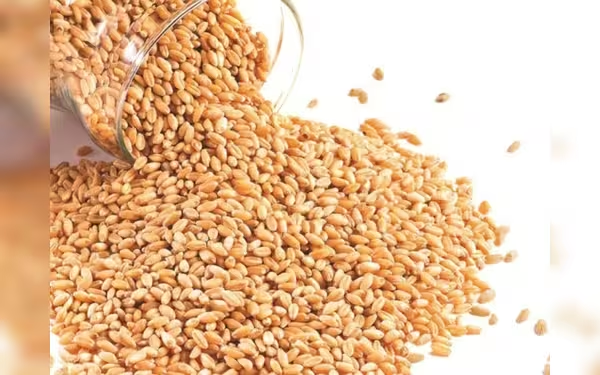Saturday, November 16, 2024 05:51 PM
Wheat Prices Surge as Weather Concerns Impact Global Yields
- Wheat prices rise for third consecutive session.
- Dry weather raises global wheat supply concerns.
- US farmers make steady progress in winter wheat planting.
 Image Credits: brecorder
Image Credits: brecorderWheat prices rise due to dry weather concerns, impacting global yields while US planting progresses steadily.
Wheat prices have been on the rise for the third consecutive session, driven by concerns over dry weather that could significantly impact yields in major producing regions. This situation has created a ripple effect in the agricultural market, influencing the prices of other crops such as corn and soybeans, which have seen a decline due to expectations of record output in the United States.
On the Chicago Board of Trade (CBOT), the most-active wheat contract increased by 0.3%, reaching $5.96-1/4 a bushel as of 0014 GMT. This upward trend in wheat prices is primarily attributed to the ongoing dry conditions in key exporting countries, including Australia, Russia, and the United States. These weather patterns have raised concerns about the availability of wheat on a global scale.
In Russia, the world’s largest wheat exporter, approximately 85 million metric tons of wheat have been harvested so far, with a total grain harvest of 120 million tons reported from 90% of the seeded area. However, the Russian Agriculture Minister, Oksana Lut, has indicated that the country is expecting a total grain harvest of 132 million tons this year, which marks an 11% decrease from last year’s 148 million tons and a 16% drop from the record 158 million tons harvested in 2022.
Meanwhile, the European Union has reported a decline in soft wheat exports, which have reached 6.35 million metric tons since the beginning of the 2024/25 season in July, reflecting a 29% decrease compared to 8.9 million tons during the same period last year. This decline further emphasizes the challenges faced by wheat exporters amid changing weather conditions.
Despite these concerns, there is some relief as planting progress in the United States remains steady. As of Sunday, farmers had planted 51% of their winter wheat, which helps to alleviate some worries regarding the impact of dry weather. Traders are also closely monitoring upcoming monthly crop forecasts from the U.S. government, which are expected to provide updated estimates for corn and soybean harvests, following last month’s projections of record yields for both crops.
Additionally, rain is forecasted in parts of Brazil, which is anticipated to assist with early planting that had previously been delayed due to excessively dry soil conditions. This could potentially improve the overall supply situation in the market.
In the trading arena, commodity funds have been active, with reports indicating that they were net sellers of soyoil, soybean, corn, and soymeal futures contracts on Tuesday, while simultaneously being net buyers of wheat futures. This shift in trading behavior highlights the dynamic nature of the agricultural market and the various factors influencing it.
The agricultural market is currently navigating through a complex landscape shaped by weather conditions and supply expectations. As wheat prices continue to rise amid concerns over yields, it is essential for farmers, traders, and consumers alike to stay informed about these developments. Understanding the interplay between weather patterns and crop yields can provide valuable insights into future market trends, ultimately helping stakeholders make more informed decisions.













